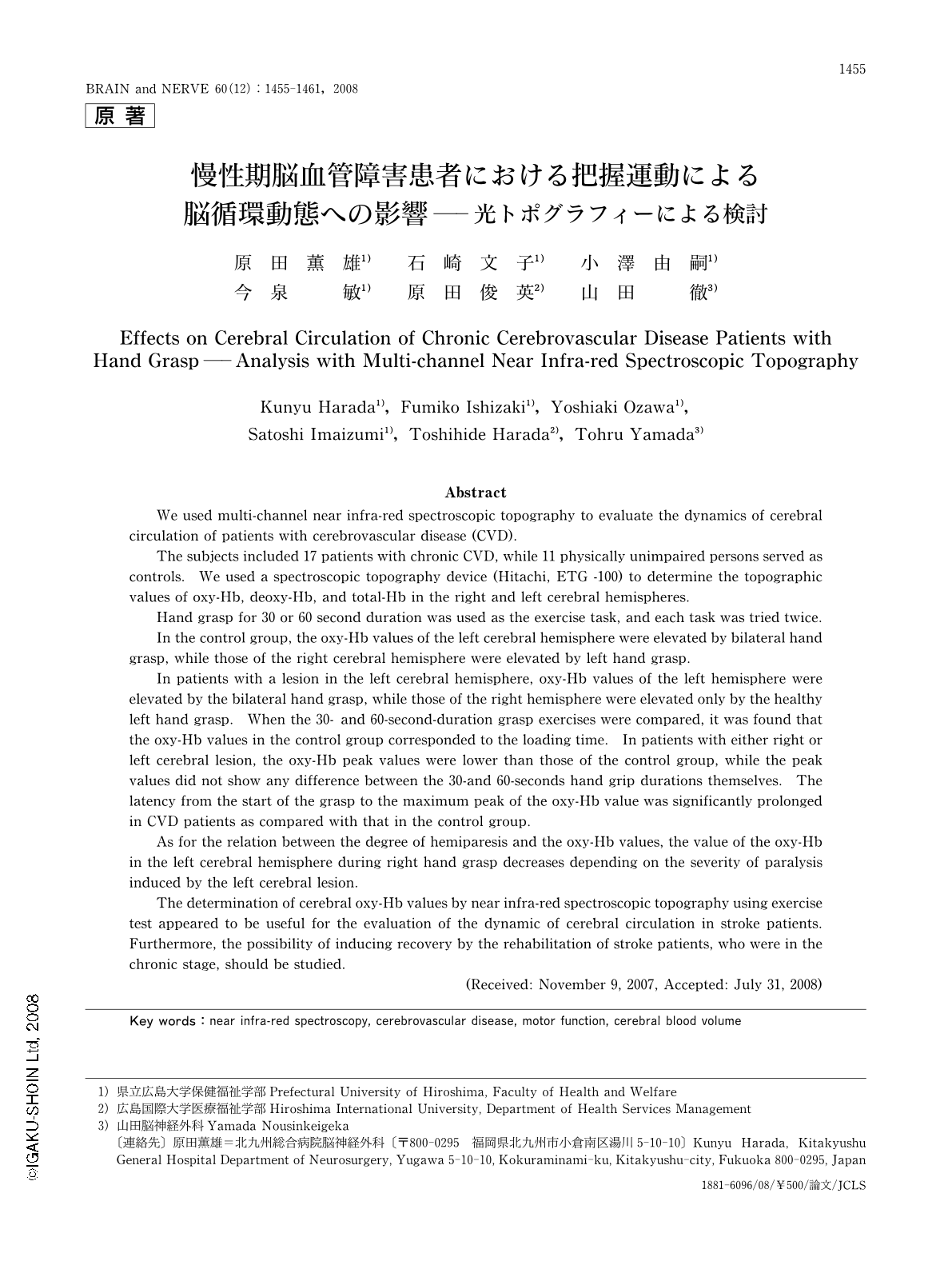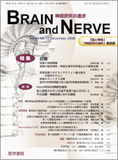Japanese
English
- 有料閲覧
- Abstract 文献概要
- 1ページ目 Look Inside
- 参考文献 Reference
はじめに
脳血管障害(cerebrovascular disease: CVD)患者の脳循環動態および残存機能の評価法として,さまざまな画像診断が開発されている。光トポグラフィーは生体透過性に優れた近赤外光を用いて,近赤外光(NERS)により大脳皮質の血液量を測定し脳の活性状態を計測し得る脳機能解析機器であり,これまで臨床の場においててんかん患者の焦点同定などに利用されてきた1-3)。今回,われわれはCVDにより大脳半球に障害を受けた慢性期患者の脳循環動態について光トポグラフィー装置を用いて評価し,その機能評価指標としての意義について検討したので報告する。
Abstract
We used multi-channel near infra-red spectroscopic topography to evaluate the dynamics of cerebral circulation of patients with cerebrovascular disease (CVD).
The subjects included 17 patients with chronic CVD, while 11 physically unimpaired persons served as controls. We used a spectroscopic topography device (Hitachi, ETG -100) to determine the topographic values of oxy-Hb, deoxy-Hb, and total-Hb in the right and left cerebral hemispheres.
Hand grasp for 30 or 60 second duration was used as the exercise task, and each task was tried twice.
In the control group, the oxy-Hb values of the left cerebral hemisphere were elevated by bilateral hand grasp, while those of the right cerebral hemisphere were elevated by left hand grasp.
In patients with a lesion in the left cerebral hemisphere, oxy-Hb values of the left hemisphere were elevated by the bilateral hand grasp, while those of the right hemisphere were elevated only by the healthy left hand grasp. When the 30- and 60-second-duration grasp exercises were compared, it was found that the oxy-Hb values in the control group corresponded to the loading time. In patients with either right or left cerebral lesion, the oxy-Hb peak values were lower than those of the control group, while the peak values did not show any difference between the 30-and 60-seconds hand grip durations themselves. The latency from the start of the grasp to the maximum peak of the oxy-Hb value was significantly prolonged in CVD patients as compared with that in the control group.
As for the relation between the degree of hemiparesis and the oxy-Hb values, the value of the oxy-Hb in the left cerebral hemisphere during right hand grasp decreases depending on the severity of paralysis induced by the left cerebral lesion.
The determination of cerebral oxy-Hb values by near infra-red spectroscopic topography using exercise test appeared to be useful for the evaluation of the dynamic of cerebral circulation in stroke patients. Furthermore, the possibility of inducing recovery by the rehabilitation of stroke patients, who were in the chronic stage, should be studied.
(Received: November 9,2007,Accepted: July 31,2008)

Copyright © 2008, Igaku-Shoin Ltd. All rights reserved.


